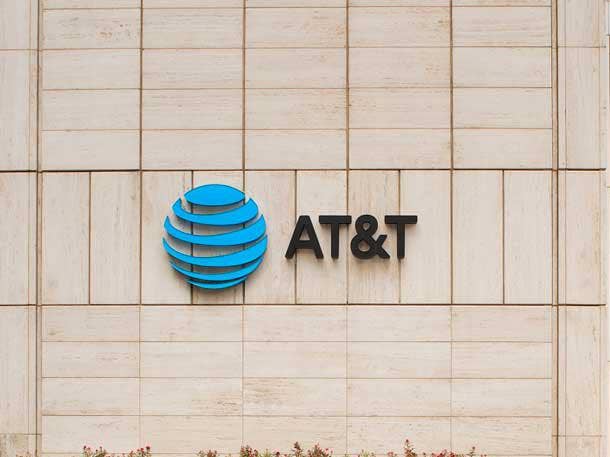AT&T Sees 'Unprecedented Volumes' Of Calls As COVID-19 Leaves Its Mark
AT&T says its network is handling the increased demand it's seeing as a result of the pandemic. Growth in strategic and managed services, such as VPN and security, served as a bright spot in the carrier's business services segment for its first fiscal quarter of 2020.

The COVID-19 coronavirus outbreak weighed on AT&T's first fiscal quarter of the year, but the carrier's network is performing very well under pressure despite the increased demand for critical connectivity, said AT&T Chairman and CEO Randall Stephenson.
"It's been a chaotic few weeks for all of us, and the COVID-19 pandemic had a significant impact to our first quarter," Stephenson during AT&T's first-quarter 2020 earnings call. "We're seeing unprecedented volumes of voice calls, texts and streaming. … Connectivity is more essential now than ever and we want to do what we can to help our customers stay connected through this crisis."
The Dallas-based carrier pulled its financial forecast for the year. Stephenson said that it's "impossible to overstate the impact of COVID-19" and that there's no consensus on how long the resulting financial downturn will last. As such, there's little information on which to base a financial guidance for the year, he said.
However, AT&T said in January that it saw mobility momentum, fiber and 5G as its path to profitable growth in 2020 as it refocuses on its core telecom business. John Stephens, AT&T's senior executive vice president and CFO, said that path hasn't changed.
"No one know the magnitude of this situation," Stephens said. "But we expect to come through healthy and be able to invest in growth areas now and in the future, such as 5G."
[Related: Here’s How Telecom Companies Are Helping Customers During Coronavirus]
AT&T's nationwide FirstNet emergency communications network is also seeing "tremendous demand" and the network is holding up extremely well for those on the front lines fighting coronavirus, Stephenson said, including health-care professionals, police and firefighters.
The carrier is providing four weeks of added paid time off for its own front-line employees who are providing essential services and aren't able to work remotely. Stephenson said that about half of its employees are working from home, including customer support teams and executives.
Business wireline services revenue dipped by 2.3 percent during first-quarter 2020 to $6.33 billion compared with $6.48 billion a year ago due to a decline in legacy voice services. However, demand is up for strategic and managed services— AT&T's most advanced business offerings, which include VPN and security, according to the carrier. Strategic and managed wireline services revenue was up 2.6 percent year over year to $3.88 billion.
AT&T said that about 600,000 business buildings are lit with fiber in the U.S. today. More than 8.5 million businesses are located on or within 1,000 feet of AT&T fiber. The carrier does expect to see a decline in small- business revenue moving forward, which accounts for about 15 percent of the carrier's business wireline revenue.
"Our core wireless, broadband and enterprise networks are critical, valuable services at this time as they connect, inform and entertain our customers," said John Stankey, AT&T's president and COO. "They also help provide a recurring stream of revenue and cash flow in times of economic stress."
A&T's Media business, on the other hand, has been particularly hard-hit by the coronavirus as theaters across the country closed, movie releases were postponed and sporting events were canceled.
The WarnerMedia unit, which includes Turner and premium TV channel HBO that AT&T acquired as part of its Time Warner purchase in 2018, reported revenue of $7.36 billion in the quarter compared with $8.38 billion last year, a 12.2 percent slip as the carrier lost premium paid-TV subscribers during the quarter.
AT&T is offering flexible payment options, has waived fees for overages and has lifted data caps for its residential and small-business customers who have been financially impacted by the pandemic, Stephenson said.
AT&T's mobility segment revenue totaled $17.40 billion during first-quarter 2020, a slight increase compared with $17.36 billion in the same quarter a year ago. The overall communications business, which includes high-speed internet, video and legacy voice services, dropped to $34.25 billion during the quarter from $35.17 billion in the first quarter of 2019, a 2.6 percent decline that the carrier said was impacted in part by consumers cutting spending during the outbreak.
Wireless equipment revenue dropped 25 percent year over year in March as a result of COVID-19.
AT&T said the pandemic reduced its earnings by 5 cents per share during the first quarter, which ended March. 31. Diluted earnings per share during the quarter was 84 cents, down from 86 cents one year ago. Total revenue declined 6.1 percent to $35.29 billion, down from $37.59 billion in the same quarter one year earlier. Net income was $4.96 billion, up from $4.35 billion in the first-quarter 2019.
The carrier said it expects to feel the full financial impact of COVID-19 in second-quarter 2020.